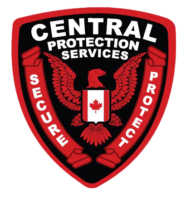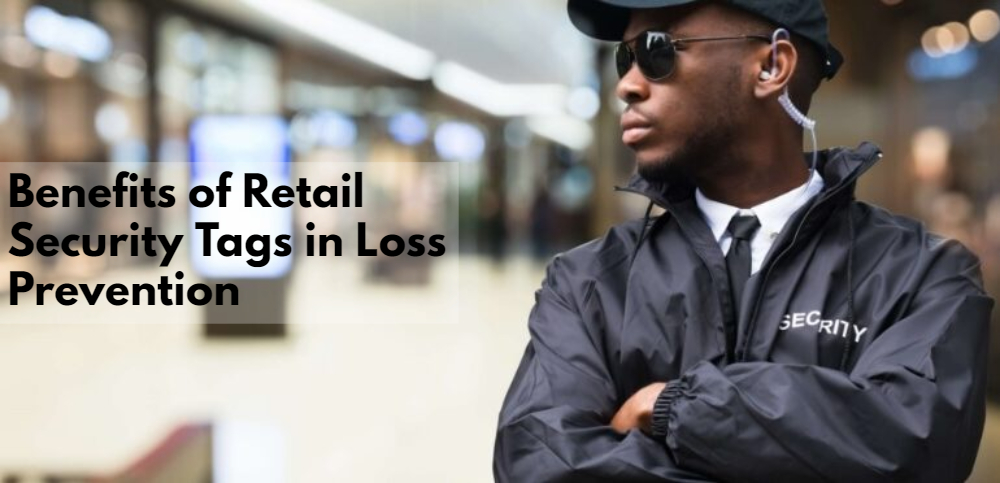Buying, storing, and displaying all are the major functions of the retail store. A retail store holds all the necessities of life from safety pins to grocery items. The retail industry confronts several challenges, and one of the most important concerns is the prevention of theft and loss. Retail security companies are hired to stop shoplifting, employee theft, and planned retail crime, helping retail store owners prevent substantial financial losses. To fight these concerns, many retailers go for security tags as an effective resolution for safety and security in retail stores. In this blog, we will explore how security tags contribute to loss prevention in retail stores and understand them as a crucial part of any inclusive security strategy.
What are Security Tags?
Retail store security tags, also known as EAS (Electronic Article Surveillance) tags or anti-theft tags, are devices deliberate to protect retail stores from theft. A small electronic chip or sensor covered in a plastic or hard tag makes up security tags, which official personnel attach to the product using adhesive or a specific locking mechanism. At the point of sale, they can easily attach or remove these tags.
Effectiveness of Retail Store Security Tags
About 80% of Canadian retailers use security tags and labels as the primary strategies in the constant war against retail store theft. Large and small retailers alike use these universally applicable security tags across all verticals, defending items that range from apparel to electronics, pharmaceuticals to groceries.
In a nutshell, security tags are part of Electronic Article Surveillance. The system perceives an antenna installed at the entrance to a store, which remains in continual communication with security tags, each casing tiny transmitters. When active security comes into proximity of the existing gate and antenna, an alarm triggers, notifying staff of the possibility of theft.
- Product-based security: Unlike CCTV or a retail security guard in Edmonton who watches over an entire store. Security tags are a product-based security measure which means they protect individual items against theft.
- Accuracy: When appropriately implemented, electronic article surveillance is highly effective and accurate. Data shows that security tags and labels can reduce theft by around 80%. Retail store staff specifically use these tags on clothing items, which stain with ink if removed without the assistance of the proper tool.
- Eliminating human error: For many retailers, one of the important benefits of security tags is that the arrangement is not prone to human error. This supports loss prevention officers assigned with protecting a store.
- Constant protection: The detection system activates when the antenna is turned on and the tags are fitted, ensuring the retail store stays safeguarded during all opening hours.
- Easy to implement: It’s easy to implement and freely scalable. Installation of EAS includes the fitting of the antenna at the entrance and as technology advances. There are more and more techniques for installing these systems. This can be as simple as concealed in door frames. After installation, the system protects additional stock with compatible security tags.
How Security Tags Work
Retail security firms utilize security tags with different technologies to deter theft and activate an alarm. When someone tries to remove a tagged item from the retail store without proper removal. Security tags help in checkpoint retail security to cut down on shoplifting losses. Attaching a tag to the store’s merchandise normally is more efficient than hiring an in-store retail Security Guard Company Edmonton to watch your customers as they shop. The prospect of a security tag on an item also can make an impending thief think twice before taking it.

Types of Security Tags Used in Retail Store Security
There are a lot of common types of security tags helping to manage safety and security in retail stores.
- Radio Frequency (RF) Tags
RF tags activate by emitting radio waves at a definite frequency. They comprise of a transmitter and a receiver. The transmitter is positioned at the store entrance, while the receiver is implanted within the security tag. Retail security firms help in the installation and transmitter. When a tagged article passes through the transmitter’s detection zone without proper removal. It activates an alarm, alerting the retail security guard to potential theft.
- Ink Tags
Ink tags aim to stop shoplifting rather than activating an alarm for safety and security in retail stores. They are specifically used on clothing items, which would be stained with ink if the tag is removed without the assistance of the tool used by retail store staff. An ampoule inside bursts and leaks ink onto the item. Retail security companies can join ink ampoules with standard RFID chips to offer an added level of protection. However, smaller retail stores often use ink tags solely to save on the cost of fitting a detection system.
- Specialty Tags
Retail security firms in Edmonton help with assistance in
knowing certain types of security tags. In retail stores, there are certain types of specialty stock that require their own tailored security tag system. For instance, liquor bottle security tags connected to the cap and activate an alarm when the cap is twisted for opening. Eyeglass security tags confer to the frame, typically at the shrines or near the end of the earpieces. The thin design of the security tags allows them to stick onto the glasses. Devoid of interfering with a customer’s ability to try them on. Moreover, shackle tags can be used to secure the handles of purses and briefcases.
- Acousto-Magnetic (AM) Tags
AM tags work on the principle of magnetostriction. They contain a thin strip of a magneto strictive solid that resonates at a definite frequency. When open to a magnetic field. The retail store entrance features an AM detection system that emits a magnetic field. The retail security guard immediately recognizes when a tagged item is carried through the detection zone without removal, and the material in the tag resonates, activating an alarm.
- Labels and Lanyards
Another economic theft deterrent that comes with or without a barcode is security labels. Soft tags, also known as labels, cannot be recycled like other types of sensors and must pass through a deactivation device to deactivate their alarm-triggering capability. Retailers in Edmonton adhere to packages of stock such as socks, hosiery, and intimate apparel.
- Soft Sewn-Ins
Retail Security Companies in Edmonton use tagging merchandise in the store which costs money and time. Many retailers have their contractors sew sensors unswervingly in the seam of a garment. Customers can neutralize these sensors, recognized as source tags, by swiping them across a demagnetizing device at the checkpoint counter. Clients should cut them out once home. Moreover, sewn-in sensors can restart after laundering and activate store alarms again. Another type of soft sensor tag works with radio frequency identification technology to track inventory from contractor to customer purchase. Retail store companies in Edmonton can identify stages in the distribution chain. This technology helps them track missing stock and allows retailers to reject returns of stolen items when the tag scan shows the stock was not purchased.
- Hard Tags
Technicians can reuse hard security devices and apply them to a variety of apparel. These two-piece tags have a pin that the retailer insets through the fabric seam and then ascribes to the garment with a plastic back, identified as a gator. Hard tags come in different shapes and sizes for use on a range of apparel including swimwear, lingerie, gloves, suits, pants, and outerwear. Retail managers eliminate them with a hard-tag detacher.
- Detection Systems
The best security for retail stores requires the installation of a detection system. As without it the security tags are a great waste. When the device passes the detectors, the alarm activates. If someone attempts to confiscate them without the proper detachment. The software connects to the detection system, managing the sensitivity, volume, and duration of the alarm. Retailers commonly use Retailers commonly use Checkpoint retail security as one of the two most popular retail security programs.

Benefits of Retail Store Security Tags in Loss Prevention
Loss prevention is an important concern for retail businesses, as theft and disappearance can considerably impact their profitability. As an active tool, the security tag has proven its worth in safety and security in retail stores. These small, discreet devices play a vital role in preventing theft and guaranteeing the overall security of retail stores. Here is the list of benefits of hiring retail security companies for the attachment of security tags and installation of detection systems.
- Security tags act as a noticeable deterrent to potential shoplifters. When shoplifters see these security tags attached to stock, it sends a strong message that the items are secure and any attempt to remove them without authorization will activate an alarm. This visual deterrent only can dampen theft and considerably reduce incidents of shoplifting.
- The security tags activate an alarm when they pass through the store’s exit without being neutralized. These alarms generate a sudden, loud noise that alerts retail security guards and other shoppers to prospective theft. The sound not only draws attention to the circumstances but also frightens the shoplifter, amassing the chances of them canceling the stolen item and making the store avoid detection.
- The presence of security tags inspires employees to persist in vigilant and proactive behavior in preventing theft. They possibly keep a watchful eye on customers, recognize suspicious behavior, and interfere when necessary. This amplified awareness can act as an influential deterrent and help employees avert theft before it occurs.
- Retailers can integrate security tags with surveillance systems, such as closed-circuit television (CCTV) cameras, to provide a comprehensive security solution. When a security tag activates an alarm, it can automatically trigger cameras in the vicinity. Capturing footage of the incident. This arrangement of security measures offers invaluable evidence for investigations and prosecution. Which can act as a solid deterrent for potential thieves.
- Retail store security tags play a significant role in keeping accurate inventory records and accompanying regular audits. By fastening security tags to each item, retail businesses can simply track their stock and compare it to sales records. This permits them to recognize any discrepancies between items sold and items in stock. Expose instances of internal theft, and apply measures to improve inventory management.
- Security tags not only guard stock but also contribute to creating safety and security in retail stores’ shopping environments for customers. When customers see security measures in place, such as noticeable security tags, they are more likely to feel self-assured about the store’s promise of their safety. This can improve customer trust, and loyalty, and eventually drive business growth.
Central Protection Services is the best security company in Edmonton. And we believe to perform better in the advantage between people and technology for their specific security needs. Importantly, we are developing advanced means to deal with more futuristic retail security challenges. Central Protection Services is a Canadian-based security company offering retail store Security Services Edmonton for the new world’s challenges. Our offices are in Edmonton, Calgary, Alberta Wide, Airdire, and allied regions. We offer technological systems and armed and unarmed security guards for retail needs. Get the quote for technologically advanced retail store security services.






